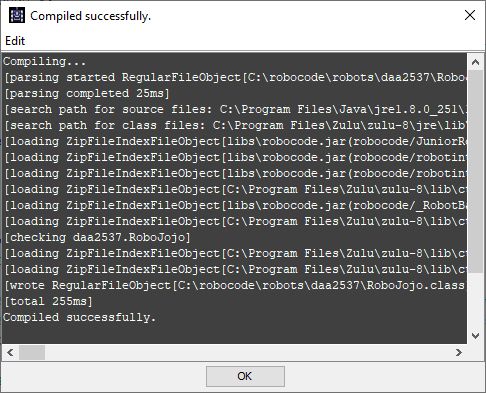

For example, a high-fidelity simulation of robots’ tracks on rough, deformable terrain will have a conflicting set of requirements with a simulation of an operating fleet of agricultural robots. We should not think that “there can be only one”.
CODE DE ROBOTEK HOW TO
Machine learning models for tasks such as detection can be trained on a mix of synthetic and real data.Īpplying simulation to each of these goals comes with its specific challenges, and there is plenty to learn about how to overcome them best. Simulation data is easier, cheaper, safer to obtain, and unconstrained by various limitations to the acquisition of real data. This is often done through validation scenarios, integrating with CI/CD for regression testing, providing dashboards with test results, etc.
CODE DE ROBOTEK SOFTWARE
Simulation can be used to validate behavior and changes in the software stack. Thanks to simulation, teams can prototype faster, which is further enhanced using ROS.

Development of robotics stack, including perception, planning, and varying degrees of autonomy.Typically, simulation serves one or more of the following goals: Picking the optimal solution for your use case might require quite some research and deliberation. There are many solutions on the market and in the open source. Simulation for robotics is a complex subject. We care about our simulation platforms and modules being well integrated with ROS to provide robotics and software engineers the best development experience. We benefit from using ROS in our projects and have contributed to its development. We worked with several engines and built simulation platforms on top of them.įrom the beginning, we also decided to work with modern ROS (ROS 2), the most important and quickly growing standard in robotics. Robotec.ai has been working on simulations for robotics since its inception. It's loaded with lots of wonderful artworks and insight.Robotics Open-source simulation for robotics with O3DE Our focus If you're a Robotech fan, then getting this book is a must. The writeup delves into the history and also some background for the characters. There's also an interview with Noboru Ishiguro, the MACROSS chief director. Last few pages of the book looks at the origins of Robotech as written by Carl Macek, a producer of Robotech. There are also multiple pages of storyboards, but again are a bit too small to see what's going on. So I guess that's the downside to the book. Included are the SDF-1 Super Dimension Fortress and other space ships, the different models of Veritech robo-jets (I love those), carriers, battleloids and other miscellaneous ships, vehicles and robots.Įnvironment art are in the form of small thumbnails which are really difficult to see what the artist is trying to portray. My favourite section is the concept art for the space ships, jets and robots. There are character designs for the humans and Zentraedi in the form of line art and marker sketches. The bulk of the book shows off the concept art. The synopsis provides a nice recap and summary for each episode. Each episode has a synopsis with accompanying screen shots. This companion artbook covers specifically the The First Robotech War (The Macross Saga) and all its 36 episodes. If you haven't watched the anime, or can't remember anything like me, then you won't feel the flood of feelings that I imagine a true fan would feel. This 246-page book is obviously going to appeal to Robotech fans more because it's a companion that features the episode guide and concept art for the anime series. My faintest memories are of the fighter jets that can transform into robots.

So I can't say that a flood of memories came back to me when I saw the book. I think I've watched Robotech so long ago when I was a little kid that I cannot even remember anything from it.


 0 kommentar(er)
0 kommentar(er)
